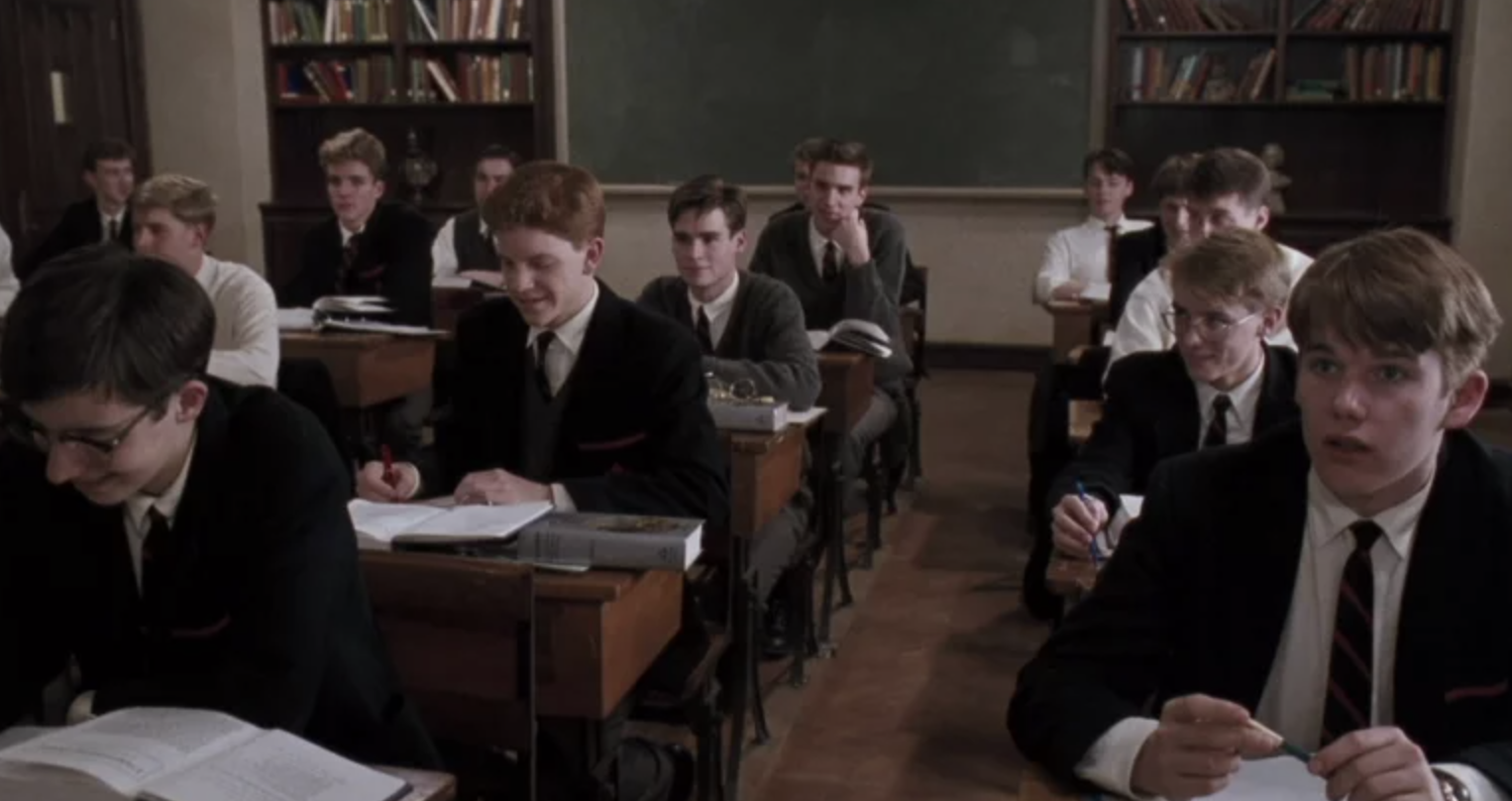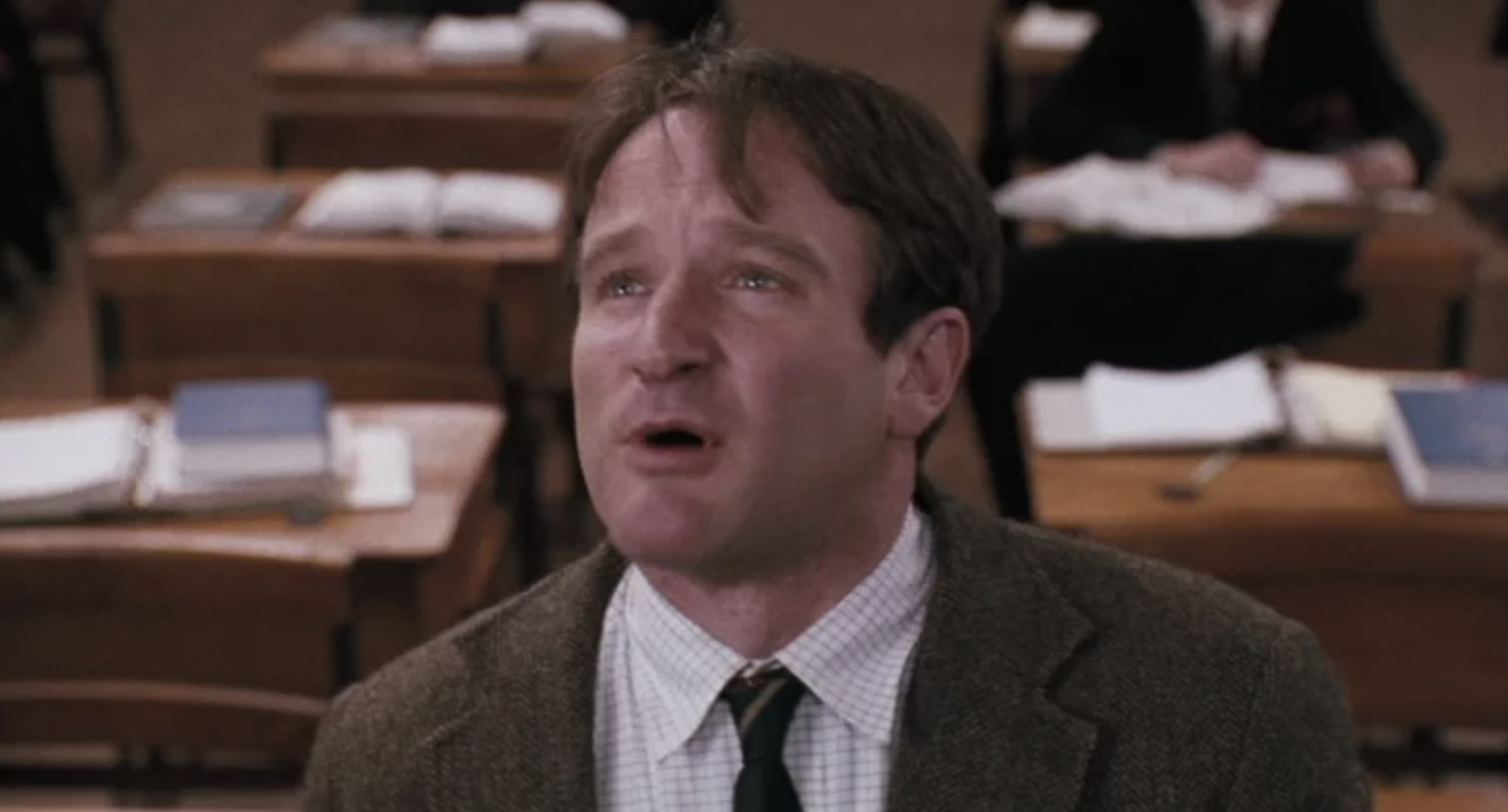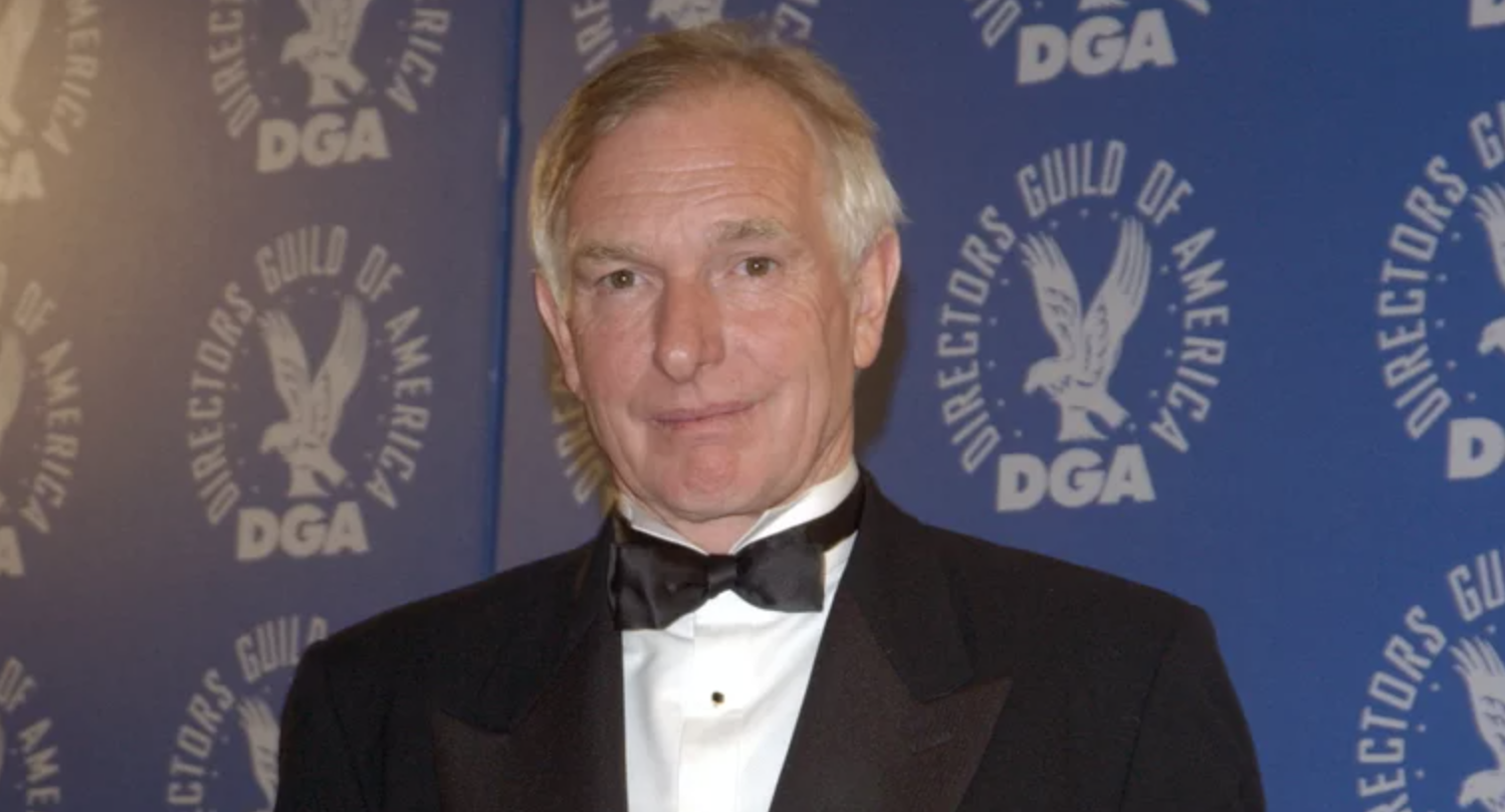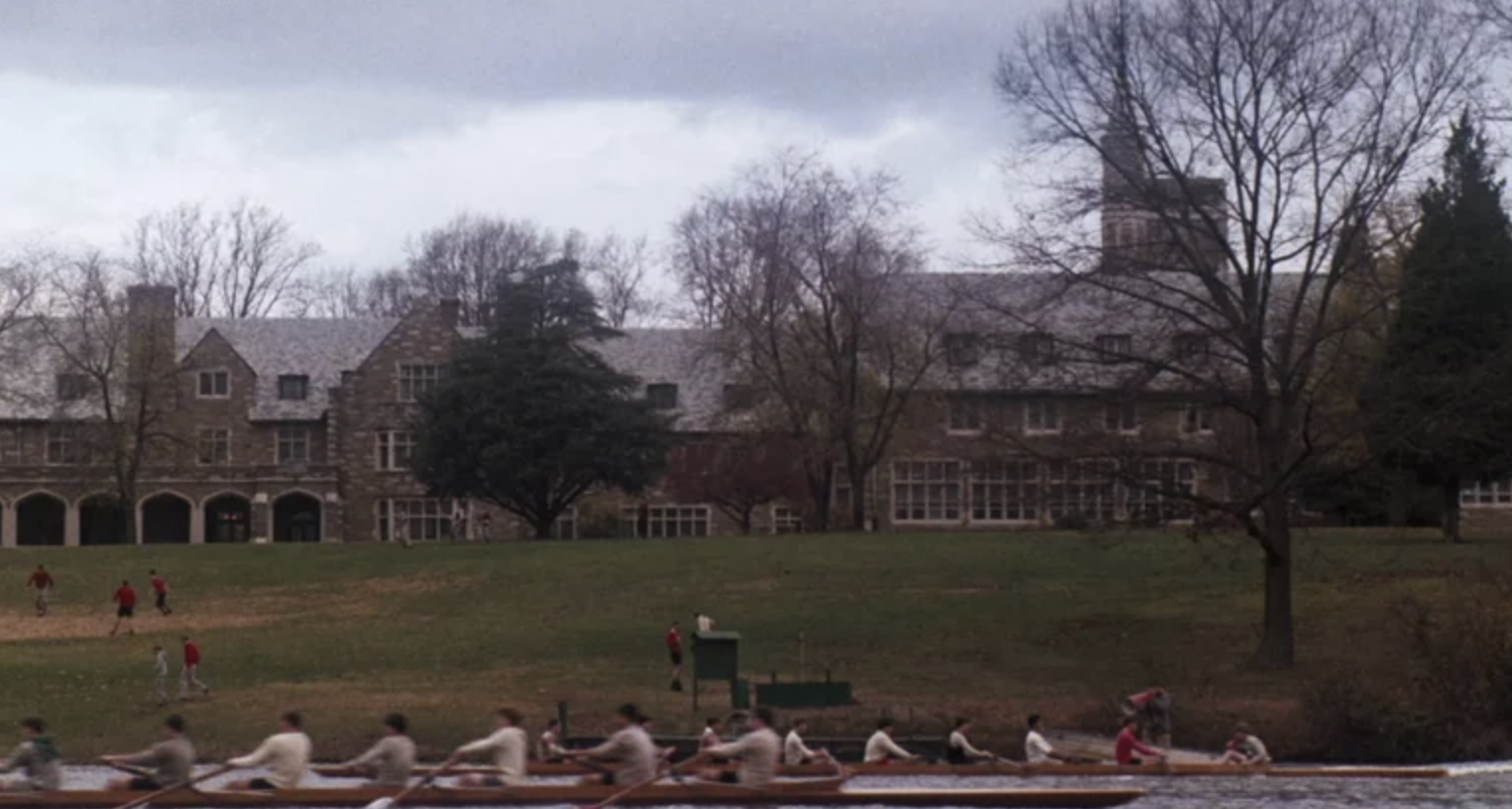The Untold Truth Of Dead Poets Society
Following a challenging beginning, “Dead Poets Society” emerged as an unexpected triumph for Disney, garnering both critical acclaim and commercial success (via The Numbers). Notably, it marked the first Touchstone Pictures production to receive an Oscar nomination for Best Picture (per Moviefone).
Set in 1959 at the fictional all-boys prep school, Welton Academy, situated in Vermont, the film follows a group of students whose lives are transformed by their charismatic English teacher, John Keating, portrayed by the talented Robin Williams. Keating, a former member of the Dead Poets Society during his own student days at Welton, encourages his pupils to embrace individuality, seize the essence of existence, and cultivate their passion for life, poetry, and the arts.
While “Dead Poets Society” is a work of fiction, it draws inspiration from the experiences of its screenwriter, Tom Schulman, who received an Oscar for his screenplay (via IMDb). Join us as we delve into the lesser-known aspects of “Dead Poets Society.”
Fictional Origins of Welton Academy

Although depicted as being located in Vermont, Welton Academy is inspired by screenwriter Tom Schulman’s time at Montgomery Bell Academy in Nashville, Tennessee (via Montgomery Bell Academy). The film loosely mirrors Schulman’s own life, with its characters bearing resemblance to individuals from his personal experiences. Schulman revealed in an interview with the University of California Television that Knox Overstreet (played by Josh Charles) was modeled after a college friend deeply enamored with a girl named Chris.
In a conversation between Schulman and the Headmaster of Montgomery Bell Academy, Schulman discussed how he initially conceived the script based on his involvement in acting and writing classes in Los Angeles. However, the narrative truly came into focus when he shifted the setting to a boys’ school, emphasizing the profound impact of an inspiring teacher on his students’ lives.
Founded in 1867, Montgomery Bell Academy stands as Nashville’s sole boys’ school, renowned for its dedication to history and tradition. Even today, in the 21st century, echoes of Welton Academy’s emphasis on heritage and legacy reverberate through MBA’s mission of molding its students into “Gentlemen, Scholars, Athletes” (via Montgomery Bell Academy). While MBA functions as a day school rather than a boarding institution, the influence Schulman drew from his alma mater remains unmistakable.
John Keating was based upon Schulman’s professors

John Keating’s character in “Dead Poets Society” was deeply influenced by Schulman’s own experiences with his professors.
During his time at the Actors and Directors Lab in Los Angeles, Schulman found inspiration from his teacher’s mentor, Harold Clurman, known for his impassioned speeches to students. Feeling his initial script lacked something vital, Schulman set it aside temporarily.
However, Schulman’s perspective changed when he reminisced with his girlfriend about Samuel F. Pickering Jr., his sophomore English teacher at Montgomery Bell Academy. Encouraged by his girlfriend’s suggestion, Schulman began reworking the script, now set in an all-boys school. This shift brought clarity to the project, giving rise to the characters we now recognize. Pickering’s unconventional teaching methods served as the basis for John Keating’s character, while Clurman’s inspiring speeches shaped Keating’s motivational rhetoric.
Reflecting on his portrayal in the film, Pickering humbly acknowledged the influence but emphasized the fictional nature of the character. Despite his brief tenure at MBA, Pickering’s distinctive teaching style, including lecturing from atop desks or wastebaskets, left a lasting impact. Following his time at MBA, Pickering pursued further education and became an esteemed English professor and essayist with several published works.
“Dead Poets Society” encountered several hurdles during its development, including changes in both directors and actors. Initially, Jeff Kanew was slated to direct, with Mel Gibson considered for the role of Keating. However, after a series of setbacks, including creative differences and scheduling conflicts, the project saw multiple shifts in direction and casting choices. Ultimately, Peter Weir assumed directorial duties, and Robin Williams solidified his place as the iconic John Keating, breathing life into the beloved character and ensuring the film’s eventual success.
Dead Poets Society was filmed in Delaware

“Dead Poets Society” may be set in the fictional backdrop of Vermont, but its real-life filming location was the state of Delaware. In a unique twist, the movie marked the first instance of an entire film being shot within the confines of Delaware’s borders. To commemorate the 25th anniversary of the film, Delaware Online shared intriguing insights into the production’s local ties.
The crew, consisting of 70 members, made their temporary home at the Radisson hotel in Wilmington, Delaware. However, some crew and cast members found the quaintness of the town somewhat lacking in after-hours entertainment, given the limited options available once the day’s filming wrapped up.
Several notable locations in Delaware served as crucial settings for the film. The Everett Theater, for instance, doubled as the venue for the play “A Midsummer Night’s Dream” within the movie. To celebrate the film’s milestone anniversary, the theater hosted a special screening, underscoring its enduring connection to the iconic film.
Additionally, the Perry family home in the movie found its real-life counterpart in the residence of Delaware resident Roger Gordon. When Gordon decided to downsize and sell his home, its history as a filming location for “Dead Poets Society” added an extra layer of significance to the property.
The film’s production not only brought cinematic magic to Delaware but also infused economic vitality into local communities. Over 1,000 residents of Delaware participated as extras, actors, and crew members during the ten-week filming period. This influx of activity injected an estimated $8 million into the state’s economy, demonstrating the tangible benefits of hosting a major film production. As a unique gesture, part of the crew’s compensation was distributed in $2 bills, encouraging spending within the state and showcasing the film’s positive economic impact. Additionally, local artist Frank Schoonover’s contributions in creating the school’s paintings further cemented Delaware’s integral role in bringing “Dead Poets Society” to life on the silver screen.
Dead Poets Society was filmed at St. Andrews School

In an effort to cultivate a sense of camaraderie among the young actors portraying boarding school students, Director Peter Weir devised a strategy to immerse them in their roles. Prior to and during filming, Weir arranged for the actors to reside together for several weeks. Dylan Kussman, known for his portrayal of Richard Cameron, reflected on this experience in the DVD commentary, expressing how the shared living arrangement fostered a strong sense of familiarity among the cast. Kussman remarked, “By the time filming started, we really felt like we had been to school together.”
Additionally, Weir organized a series of workshops at St. Andrews to acquaint the young cast with the historical context of the film. During this preparatory period, Weir imposed strict guidelines to ensure authenticity, prohibiting the use of contemporary language. He highlighted the importance of this approach, noting, “It’s remarkable how much intonations have changed over the years, if you listen and think about it” (via Los Angeles Times). These workshops consisted of various exercises and improvisations aimed at loosening up the actors and fostering a relaxed atmosphere. Weir’s decision to film in chronological order further facilitated the natural development of camaraderie among the cast, particularly between the young men and their teacher (via E!).




